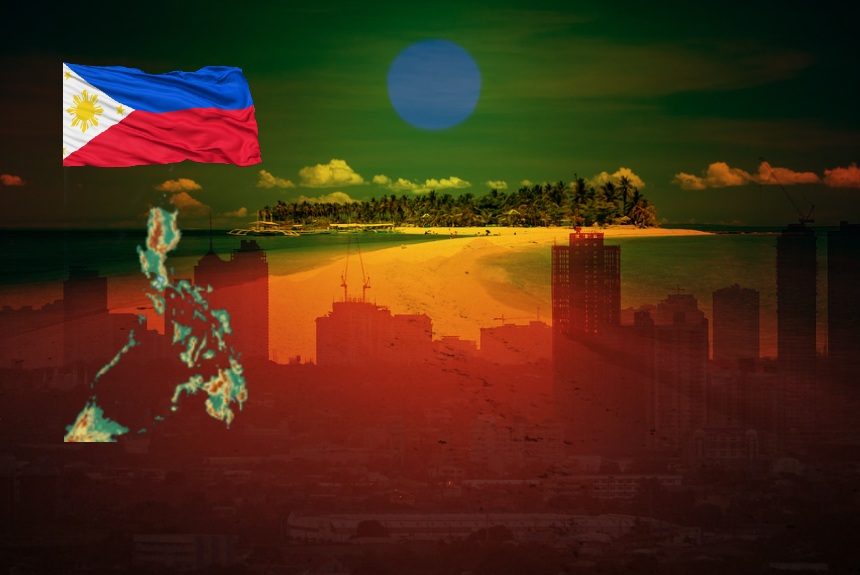The report, “Adaptation to and Risk Reduction in Climate Change in the Philippines,” published by the Yuchengco Center, De La Salle University, Manila, presents a thorough investigation of the country’s exposure and vulnerabilities to climate change, climate projections, other issues related to climate change, the country’s response, and recommendations from the authors.
The Philippines ‘ vulnerability to climate change is due to its geography, location within the pathway of typhoons in the Pacific Ocean, and earthquake-prone Pacific Rim.
The deadliest storm that hit the country in recent memory was Typhoon Haiyan in 2013, which claimed 6,300 lives, displaced 4.1 million families, and affected 16 million people.
Health dangers from increased rainfall and floods
Increased rainfall and warmer temperatures will raise vector-borne diseases like dengue fever and mosquito-borne illnesses like filariasis and malaria. There is a strong correlation between the amount of rainfall and the prevalence of dengue fever.
In 2015, there were 200 thousand cases of dengue and 600 deaths recorded. In addition, exposure to floods contaminated with rubbish and human waste can lead to a cholera outbreak, and when ingested, can inflict Leptospirosis, a deadly bacterial infection.
Philippine Climate
The Philippine climate is tropical rainforest, savanna, tropical monsoon, or humid subtropical in higher-elevation areas characterised by relatively high temperature, humidity, and frequent rainfall.
The country has two seasons—the wet and the dry—based on rainfall amounts. The warmest months of the year are March through October, and the cooler months when the winter monsoon brings cooler air are November to February.
Located near the equator, the Philippines has two prevailing weather systems influencing its climate, the northeast and the southwest monsoons.
During the transition period, the easterlies take centre stage. The northeast monsoon, or amihan, brings cold and dry weather, while the southwest monsoon, or habagat, brings warm and humid weather from July to September. The easterlies from late March to June bring cloudiness and thunderstorms.
Climate Change Trends in the Philippines
Eight or nine tropical storms make landfall in the country each year, and four of the country’s ten most catastrophic storms have occurred in the past decade.
The high humidity and heat in May and June and sometimes up to July are the breeding ground for storms. Rains and strong winds, called monsoons, would come in July and November.
Like most parts of the world, the Philippines has experienced temperature increases. Records from 1951 to 2010 (from 1971 to 2000) show an average increase of 0.648°C in the last 60 years; maximum day and night temperatures have increased by 0.36°C and 1.0°C, respectively.
There has been no increase in the frequency of tropical storms, which is an average of 20 tropical cyclones (TC) within the Philippine Area of Responsibility. Still, there is a slight increase in the number of TCs with a maximum speed of over 150 kph and above during an El Niño event.
In the past 30 years, between 1971 and 2000, there has been a slight increase in TCs in the Visayas region compared with 1951 to 1980 and 1960 to 1990.
Analysis of extreme daily maximum and minimum temperatures shows a significant increase in the number of hot days but a decrease in the number of cool nights. However, no significant changes were observed in the country regarding increases in extreme daily rainfall.
The Philippine government has started implementing mitigation strategies to limit GHG emissions through various sectors, particularly in the energy, transport, and agricultural industries.
However, the greatest challenge for the country is to improve its efforts towards GHG and align them with its sustainable development goals.
The country’s climate policy.
When this report is published, climate change policy at the national level will be fragmented. Local government units (LGUs) have the best role in identifying the best solutions to address climate change impacts and localising strategies on adaptation measures.
The country has made substantial progress in institutionalising laws such as the Climate Change Act of 2009, which aims to integrate disaster risk reduction measures into climate change adaptation plans, development, and poverty reduction programs and create the Climate Change Commission.
Other laws include the Clean Air Act of 1999, the Philippine Clean Water Act of 2004, and the Ecological Solid Waste Management Act of 2000; the main challenge is implementing these laws and making them matter.
Significant findings on climate change impacts and vulnerabilities
Overall, the report finds that the mean temperature in the Philippines is increasing, and nighttime temperatures are rising. Shifting pathways of more intense typhoons and shifting seasons are observed.
There are fewer rainy days. Due to a changing climate, an increasing number of weather-related disasters, such as intense tropical cyclones and heavy rainfall events, will lead to enormous economic costs and loss of lives.
The report also discusses the following topics:
- Climate impacts on Philippine forests, watersheds, and coastal sectors
- Impacts on food production, the vulnerable population, and health
- Climate projection in the country
- infrastructure damage
- Legal defences to survive climate change
- sea-level rise
- cross-cutting issues linked to climate change
- response from the government, and
- recommendations from the authors of the study.
To read the entire report, click the link below.
Source:
Adaptation to and Risk Reduction in Climate Change in the Philippines. (2017). Yuchengco Center, De La Salle University. Retrieved from https://www.academia.edu/39617577/Adaptation_To_and_Risk_Reduction_in_Climate_Change_in_the_Philippines



Leave a Reply